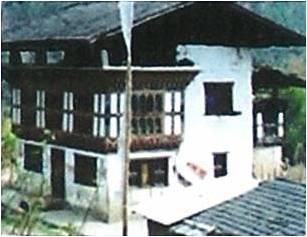
Traditional farm house located in the Ura valley.
SITE PLAN
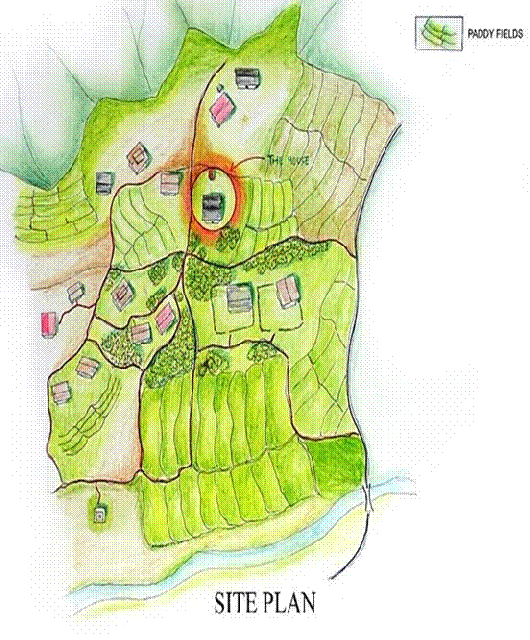
SITE CONDITIONS
- Mountainous Region with moderate vegetation
- Altitude of 3100m (10,170ft)
- Climate – temperatures ranging from 4.4°C in winters to 24°C in summers.
THE VILLAGE
- The house is a traditional Bhutanese farm house, located in Ura village under the Bumthhang district in central Bhutan, at a height of 3200 meters altitude.
- This is a good example of typical dwelling of the drukpa people (the majority ethnic group).
- The farm house sit in isolated valley in a small cluster called the “gung chim” that may consist of fewer than a dozen families. Often the valley is over looked by a fortress like ‘Dzong’ that serves as both a monastery and as an out post of the government.
- The people of the village are mostly farmers where men work in the fields and women sit at home, weaving and cooking.
- The village is situated on the sides of road surrounded by beautiful mountains.
THE HOUSE
- Traditional Bhutanese farm house is a mixture of Tibetan and Chinese architecture.
- Its orientation towards the south east direction.
- Zoning
- Public: Kitchen
- Semi-public: Prayer room, Guest room, Weaving room and Store rooms.
- Private: Bed room
- Farm house is generally shaped like a rectangle.
- Their walls made of dried mud and stone masonry, are typically painted white.
- On the lower level the walls are pierced by few small windows and a nondescript door.
- The house is oriented towards the south east direction.
- It’s a two storey house, where the ground floor is a store and cattle shelter.
- The top floor is where the family lives.
- To reach the first floor one must ascend a narrow ladder made from the tree trunk.
- The main living area of the house is the kitchen, which is combination eating space, reception hall and sometimes sleeping area.
- Cooking is done over a mud stove, which is the only source of heat in the winter.
- The top floor has a guest room and a bed room for the family. For the women a weaving room is made.
- The other important room of the house is the chosham (the prayer room),it is the private Buddhist altar, elaborately decorated to resemble the interior of the temple.
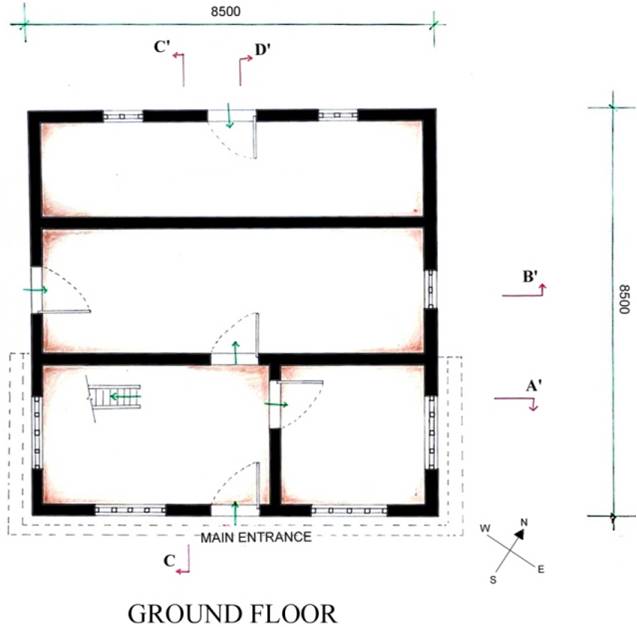
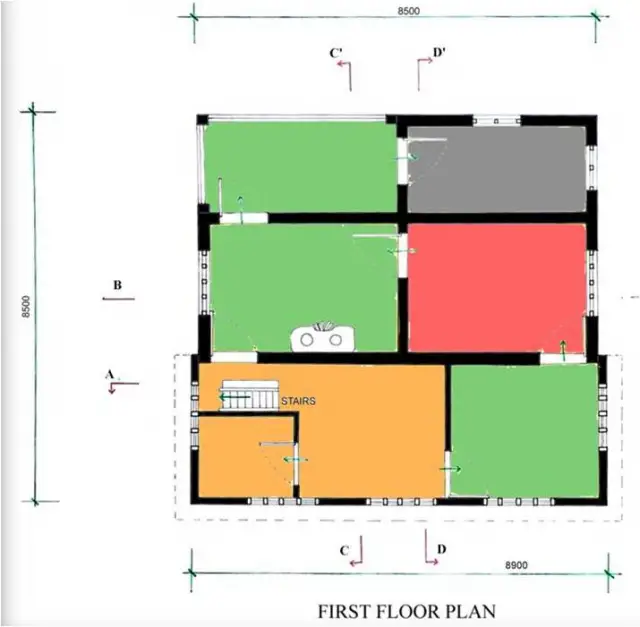
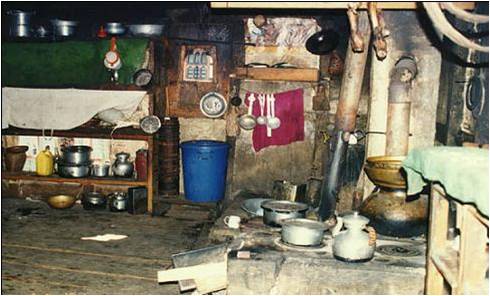
KITCHEN (THABSANG)
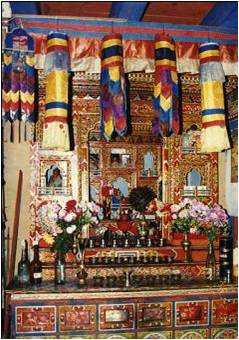
PRAYER ROOM (CHOSHAM)
- The house has a verandah in the top floor which is used as a bathing place.
- A kitchen store is provided near the kitchen.
- Above, the attic spaces of the farm house are used as storage areas for vegetables and straw.
- The roof is made of wooden shingles stacked in place and weighted down by stones.
- To reach the out side of the roof, one may simply push away
- Some shingles from below.
- On top of the roof is the family prayer flag which is replaced once a year.
- Its is believed that the prayer flag sends the family’s prayers to the wind with every flutter.
- The room in the house doesn’t have a toilet attached to it, the toilets are made behind the house.
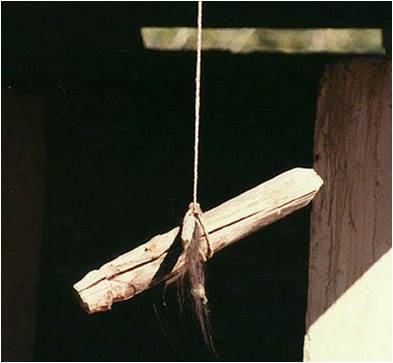
The house has a organ like structure made of wood hung from the roof which the family believes to bring a good luck and drives away evil spirits.
BUILDING MATERIALS
- The foundations
- After the site has been consecrated by the priest, the foundation is laid.
- The width of the foundation is very large and is brought up to the plinth level.
- Timber joists are then laid across the masonry to form a timber floor.
- The Timber Frame Wall
- Also called the “Ekra” wall – usually facing the southern side.
- This wall is essentially made out of a timber frame structure with infill of wooden strips of bamboo with a mud – plastered surface.
- The wall is light and allows considerable structural freedom, which absorbs the frequent seismic vibrations.
- The ekra wall is located at the top most floor and contains windows usually of two tiers.
- The two tier windows form a normal traditional room height, which is not greater than 2.5m.
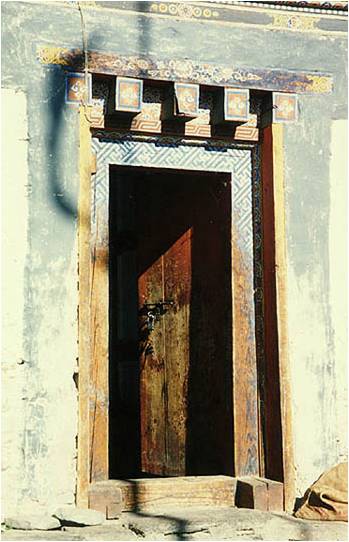
Door and windows are made out of pine wood, it’s well carved and has paintings which resembles the traditional Bhutanese art.
- Roof
- The roof is a pitched wood shingle roof.
- The roof is divided into two portions – one flat and the larger two-sided sloping roof.
- The wide roof overhead is one of the identifying features of Bhutanese architecture.
- Since the place receives heavy rainfall, the roof overhang protects the timber and masonry below.
- The space in between the roofs is used for drying purposes like drying of red chillies, meat, hay and firewood.
- The roof is supported on principle rafters resting on the raised mud walls or timber joists.
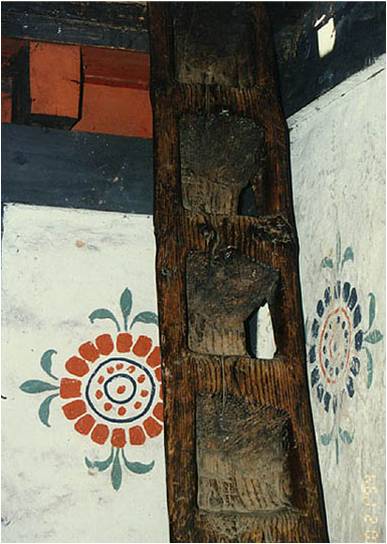
- Stairs are made from the hollowed
- Tree trunks with steep flight.
- Its the main connection between the ground floor and the first floor.


It appears that the HOUSE is
It appears that the HOUSE is built with visionary approach with missionary zeal. Excellent.